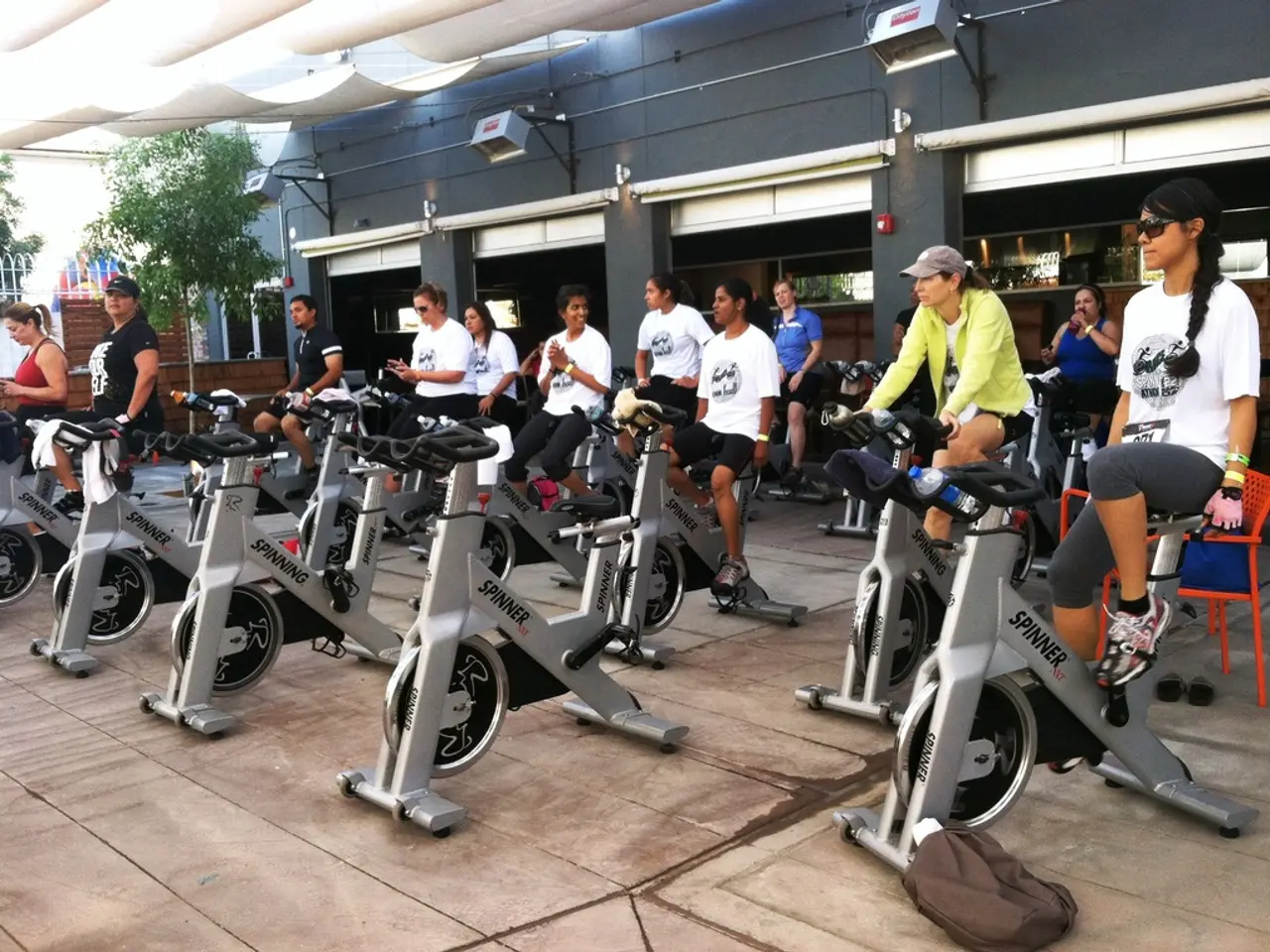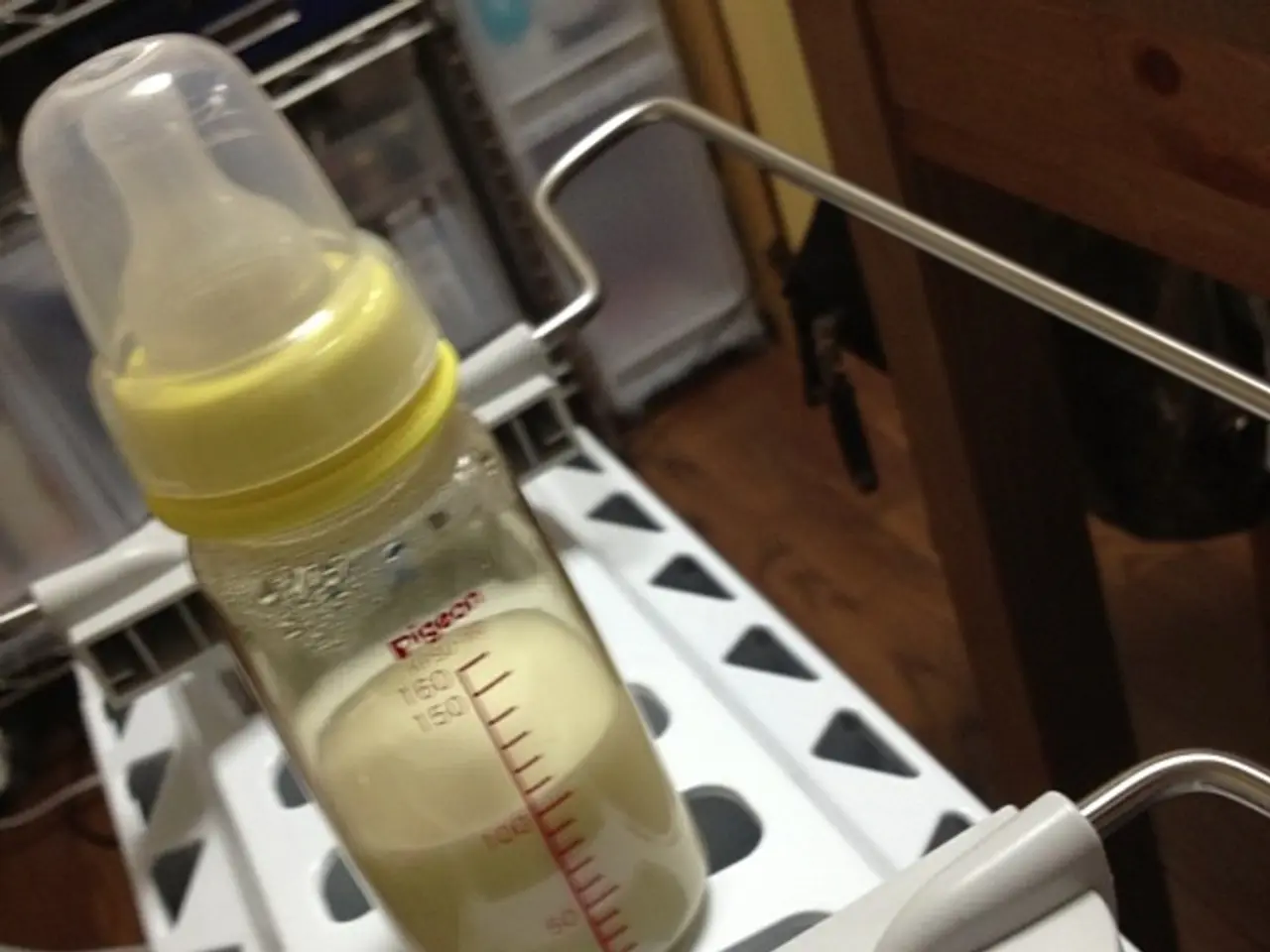Soaring temperatures call for workout adaptations: 5 certified workout routines to minimize perspiration intensity
Exercising Safely During a Heatwave: The Benefits of Low-Sweat Workouts
As the UK experiences a heatwave, it's essential to prioritise safety when it comes to exercise. Low-sweat workouts offer a solution for exercising safely during extreme heat, providing distinct benefits compared to high-intensity training.
Low-sweat workouts focus on strength, mobility, control, and breath, limiting intense cardiovascular strain and excessive fluid loss from sweating. This reduces the risk of heat-related illnesses such as dizziness, dehydration, and heat exhaustion.
One such low-sweat workout is a slow yoga flow, incorporating seated and lying postures like cat-cow, supine twist, and reclined bound angle. Mat-based Pilates is another low-sweat workout that targets the abs, inner thighs, and glutes, making it great for exercising during a heatwave.
Static exercises like wall sits, glute bridges, static lunges, and planks are part of an isometric strength circuit that provides muscle tension without cardio chaos. Resistance-band training is portable, making it ideal for traveling or staying somewhere hot.
These workouts are less taxing on the nervous system and cardiovascular system under heat stress, making recovery easier. They also support mobility, strength, and joint health through controlled, low-impact movements.
Additionally, low-sweat workouts are more suitable for hot weather due to their ease of consistent practice. Avoiding the discomfort of heavy sweating and overheating makes it easier to exercise consistently during heatwaves.
In contrast, high-intensity training in hot conditions stimulates beneficial heat adaptations but comes with greater risk of dehydration and heat strain if not carefully managed. High-intensity heat training requires strict attention to hydration, salt intake, and timing to avoid negative effects.
Therefore, low-sweat workouts are the safer and more sustainable choice for exercise during hot weather conditions. They provide effective strength and mobility benefits while preserving hydration and cardiovascular stability.
Here's a comparison of low-sweat workouts and high-intensity training in heat:
| Aspect | Low Sweat Workouts | High-Intensity Training in Heat | |-----------------------------|-----------------------------------------|-------------------------------------------| | Intensity & Sweat | Low intensity; minimal sweating | High intensity; heavy sweating | | Risk of Heat Illness | Lower | Higher if unmanaged | | Benefits | Strength, mobility, joint health, recovery | Cardiovascular adaptations, endurance | | Best Examples | Yoga, Pilates, resistance band training | Interval training, metabolic conditioning | | Suitability in Hot Weather | Very suitable, easier adherence | Requires careful hydration and timing |
In summary, low-sweat workouts do not necessarily mean lower effectiveness. They offer benefits such as easier recovery, reduced risk of heat-related illness, support for mobility, strength, and joint health, better adherence in hot weather, and protection of the nervous system from over-stimulation.
Whether you choose mat-based Pilates, yoga, resistance training with bands, or breath-led exercises like Pilates and yoga, remember to stay hydrated, and enjoy a safe and effective workout during the heatwave.
- Yoga and Pilates, classified as low-sweat workouts, focus on strength, mobility, control, and breath, making them ideal options for exercising during a heatwave.
- Static exercises like wall sits, glute bridges, and planks are part of an isometric strength circuit that provides muscle tension without causing cardio chaos, making them suitable for hot weather.
- Resistance-band training, being portable, is an alternative low-sweat workout that is ideal for traveling or for exercising somewhere hot.
- Exercising in hot weather, however, requires careful attention to hydration and salt intake when performing high-intensity training to avoid heat strain and dehydration.
- A healthy lifestyle, which includes home-and-garden activities, fitness-and-exercise routines, and prioritizing health-and-wellness, can benefit from incorporating low-sweat workouts during a heatwave.
- By choosing appropriate workouts and maintaining proper hydration, one can continue their fitness-and-exercise routine without compromising on their lifestyle and well-being during the hot weather conditions.




